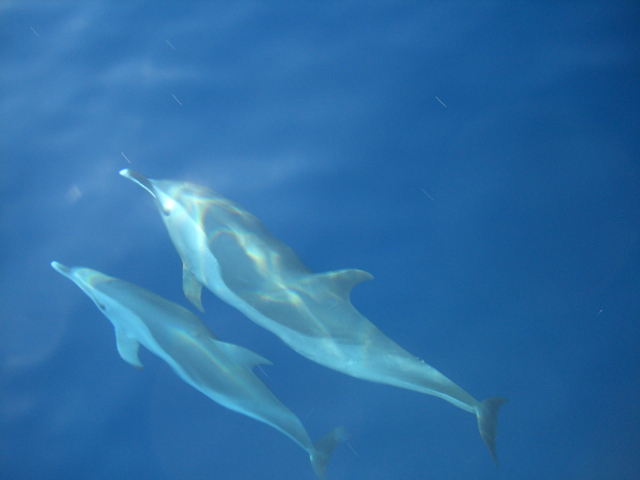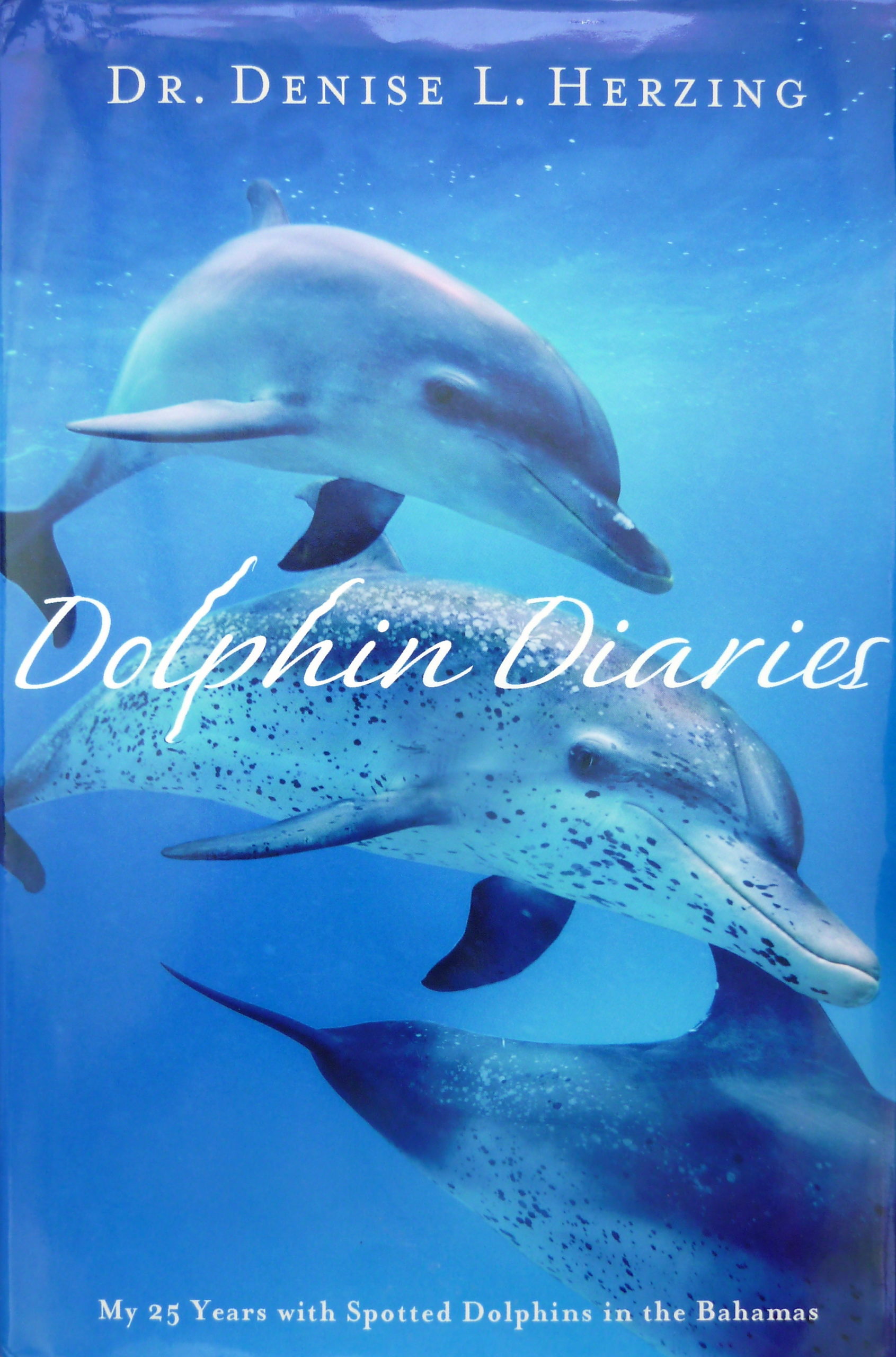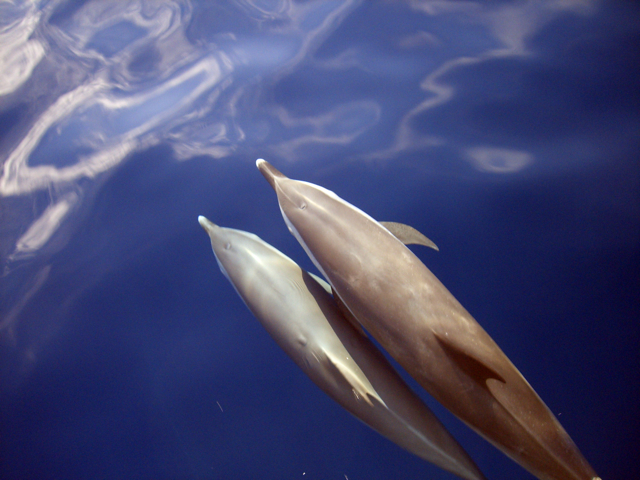Published in the Ocean Watch column, Honolulu Star-Advertiser © Susan Scott
July 11, 2011
When I was growing up, I enjoyed Jacques Cousteau TV specials, and I also liked “Star Trek.” To me the two were similar. In rural Wisconsin the ocean and its inhabitants felt as accessible as Vulcan and as real as Tribbles.
A fellow Midwesterner, Denise Herzing, also watched Cousteau shows, and she fell for dolphins. This was no little girl’s infatuation with cute animals: Denise wanted to know what went on in dolphin brains. When she was 12 years old, she wrote an essay about the one thing she would like to do for the world: “I would develop a human-animal translator so that we could understand other minds on the planet.”
 Courtesy Scott R. Davis
Courtesy Scott R. Davis
Dolphins, off Australia, 2006
Well, if you’re going to mind-meld with another species, it’s only logical to do it with the animals that have the highest brain-to-body ratio on earth (after humans). And that’s dolphins.
Researchers have studied dolphin communication with captive animals for decades, but Herzing wanted to know whether she could create two-way communication with wild dolphins. She spent most of her adult life in that pursuit, and shares that journey in her new book, “Dolphin Diaries: My 25 Years with Spotted Dolphins in the Bahamas.”

Herzing chose to work with the Atlantic spotted dolphin because the species is highly social, and groups of them hang out in the shallow and accessible sand banks of the Bahamas.
(One of Hawaii’s most common dolphins is the closely related Pantropical spotted dolphin, also an extremely social species but hard for us to get near as they prefer rough channels.)
For years, Denise and her team traveled to the same spot every summer to visit the same dolphins. Through markings and behavior, Denise got to know individuals and their relationships to one another, and the dolphins came to recognize and be comfortable with her.
Herzing learned to play dolphin games, such as push-the-sea-cucumber and pass-the-seaweed. The human players added a red bandanna to the games, a toy the dolphins loved and sometimes stole.
After 12 summers (and a load of bandannas), Denise discovered that these dolphins have sex for fun, love to play and have strong social bonds. “Every dolphin,” she writes, “is someone’s mother, brother or friend.” It was time to start experimenting with two-way communicating, a process that took up the next 13 years and counting.
How Herzing went about this research, and the results, was part of the fun of reading her book, so I won’t spoil the story. I will say, though, that a good part of the narrative shows the obstacles, from tiger sharks and hurricanes, to boat repairs and bureaucracy. Working with dolphins is sometimes fun, but 95 percent of the time it’s hard work.
 Dolphins leaping in bow wake, off Australia 2006. Courtesy Scott R. Davis
Dolphins leaping in bow wake, off Australia 2006. Courtesy Scott R. Davis
Like Denise, I eventually discovered that I too could travel to the alien world of the ocean, survive its potentially lethal environment and connect with its fantastic creatures. From the get-go, whenever I saw dolphins riding my bow wave, I always wondered: What are these animals thinking?
“Dolphin Diaries” beamed me underwater and gave me the rare and long-lasting gift of some dolphin thoughts. Thank you, Denise and dolphins. Live long and prosper.